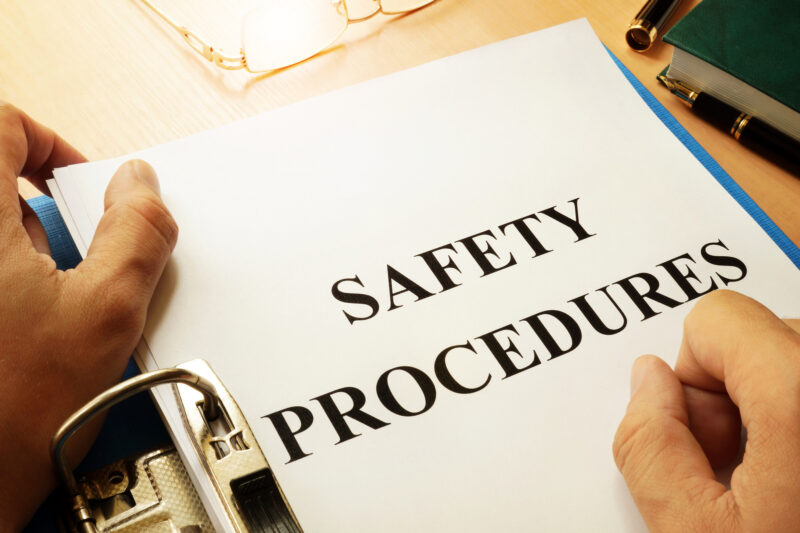Safety Data Sheet (SDS): The What, Why, and How!
Prioritizing the security of your business is an essential practice when it comes to maintaining success. This doesn’t only involve protecting your business from outside attacks, however. It’s also imperative that you keep your work environment as safe as possible.
For this reason, organizations that work with harmful chemicals or substances are required to implement a safety data sheet (SDS) in order to protect personnel at their facility. Let’s dive into everything you need to know.
What Exactly Is a Safety Data Sheet (SDS)?
As the name suggests, a safety data sheet is a form that contains certain information in order to keep employees as safe as possible. In the past, regulations were far looser when it came to how certain substances were handled, how they were stored, etc.
Today, however, there are rigid guidelines that dictate how you should handle harmful or dangerous chemicals. Failure to adhere to safety data sheet regulations could easily result in your organization experiencing penalties.
For example, let’s assume that a representative of the Occupational Safety and Health Administration audits your company on its workplace safety. The absence of a safety data sheet is a major red flag that is sure to come with consequences.
Who Needs to Utilize One?
Any business that works with harmful chemicals or substances must include a safety data sheet at its facilities. Interestingly, far more organizations than you might expect are required to implement them. To elaborate, a painting company should have a safety data sheet that clearly outlines how to store, manage, and use the paint products that it implements.
However, simply having a data sheet is not enough on its own. You will need to also ensure that they remain fully accessible to the appropriate parties.
In general, maintaining this level of accessibility involves keeping them in common areas and workspaces. If you do choose to keep your safety data sheet information within a separate room, filing cabinet, etc., your workers should all have the necessary keys or passwords in order to access this information.
Otherwise, you might be breaking protocol even though you technically have safety data sheets within your facility. You can visit this resource to learn more about how often to update an SDS.
What Key Information Does a Safety Data Sheet Contain?
To fully understand the utility of a safety data sheet, it’s also imperative to understand the type of information that it contains. From here, you can then deduce how it will pertain to your business. Let’s dive in.
First Aid Measures
Not every situation requires the same type of first-aid measures. For instance, inhaling a harmful substance will require a different treatment than having that same substance come in contact with your eyes.
As you might guess, this is some of the most important data to incorporate within an SDS since it can often mean the difference between successfully treating an incident or not. This section should include descriptions of symptoms, whether or not these symptoms are immediate or delayed, and the appropriate course of action to take after exposure.
Handling and Storage
It’s absolutely imperative that you properly store dangerous chemicals. This is simply due to the fact that certain chemicals could cause a reaction if they come into contact with each other. More often than not, this could prove to be a significant danger for everyone within the immediate area.
The same can be said when it comes to the handling of certain chemicals.
In general, handling guidelines involve minimizing the release of the chemical into the surrounding environment. Additionally, these outline how to maintain a sufficient level of hygiene after working with the chemical.
Handling regulations also establish whether or not a certain level of ventilation is required when working with the substance.
Emergency Protocol
As you might guess, an emergency protocol is one of the most significant areas of a safety data sheet. Although it’s crucial to do all that you can to prevent an emergency from occurring, this doesn’t mean that you can completely eliminate the possibility.
In order to fully protect your employees in the event of a disaster, your SDS should contain a thorough emergency protocol for them to follow. For example, assume that you are working with a hazardous gas that can quickly cause significant harm to any human or animal that inhales it.
Your team should have a strong grasp of how to react in the case of an accidental release into the environment.
The scenario not only puts the health of other individuals at risk, but it also comes with a significant number of legal complications, as well. So, it’s in your best interest to do all that you can to mitigate damage.
Substance Info
Of course, no safety data sheet is complete without detailed info on the substances you are utilizing. These chemicals should be identified by their ingredients, manufacturer, and active hazards. These hazards should also be classified into the appropriate category, such as whether or not they are flammable or toxic.
As long as you have this information about all of the chemicals you use within your organization, you are unlikely to encounter issues in the future.
Adhering to Your Safety Data Sheet Responsibilities Is Crucial
Fortunately, the above information will help you do so much more effectively. From here, you’ll be able to implement safety data sheet (SDS) regulations and avoid complications in the future.
Want to learn more useful info? Be sure to check out the rest of our blog.


